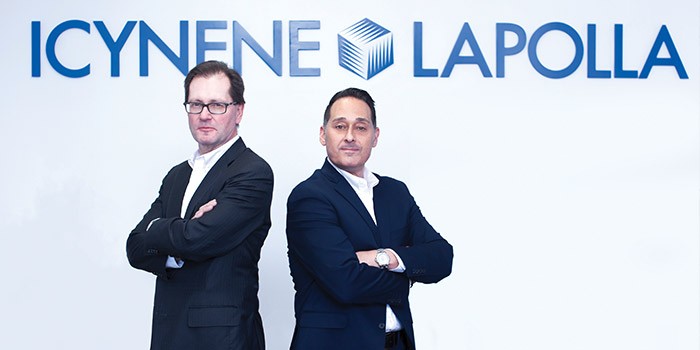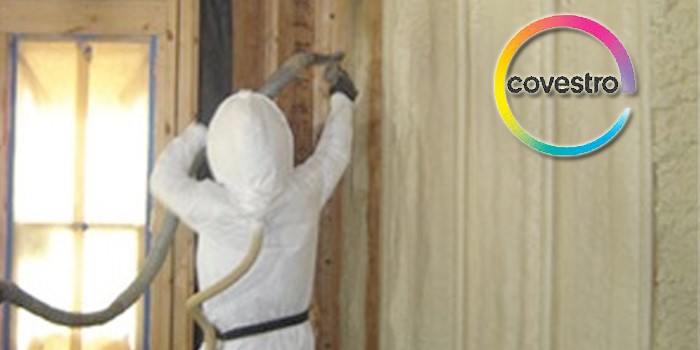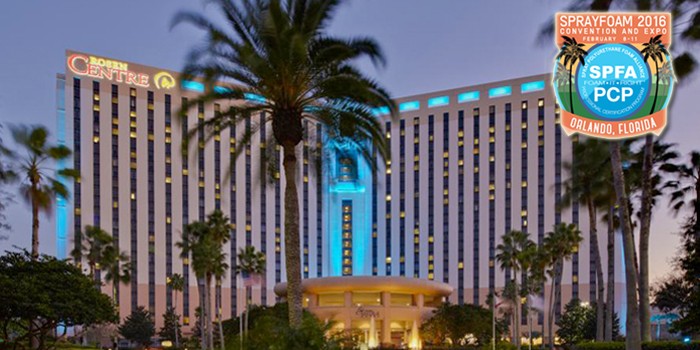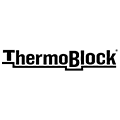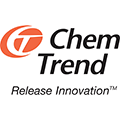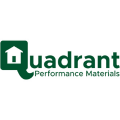Is Spray Foam “GREEN” Insulation?
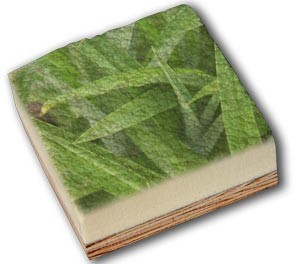
December 10, 2008 - Brielle, NJ - “Is it ‘green’?” is quickly becoming one of the most frequently asked questions by consumers of all types of products today. Concern for the environmental future of the globe as well as economic implications to our personal finances has everyone stammering for ways to reduce dependency on oil and reduce carbon emissions.
Since World War II we have allowed our lives to become dependent on cheap oil. Ninety percent of transportation is fueled by oil. Look around at the market; it is full of products that are petroleum based from fabrics to plastics. It is estimated to take six barrels of oil just to bring one cow to market. According to geologist and author Jeremy Leggett, we use 84 million barrels of oil a day. Chevron states, “It took 125 years to use the first trillion barrels of oil. We’ll use the next trillion in thirty.” With a predicted 30 years worth of petroleum supplies left, Chevron continues, “One thing is clear; the era of easy oil is over.”
The theory of peak oil holds that worldwide production of oil will rise until approximately half of the world’s oil production has been exhausted. This is the “easy oil”; oil that is found on shore or near shore, close to the surface and concentrated in large reservoirs and is “easy” to extract. At this point, daily output hits a peak and begins an irreversible decline. Oil fields all follow the same pattern of rise, peak, and then fall. According to the largest petroleum company in the world ExxonMobil, oil supply is twice as much as “early-peakers” estimate, placing peak oil decades away around 2030. By Leggett’s estimation the world will reach peak oil no later than 2010, “We are no longer living in a world of growing, cheap oil but a world of rapidly shrinking supply of vastly more expensive oil.” With prices rising daily at the gas pump one might be more inclined to conclude that the “peak oil” era is already upon us.
Whether you believe that we have or we are close to reaching peak production, consuming half the world’s oil supply, you cannot dispute that demand continues to exceed supply and doesn’t seem to be slowing. According to a report issued by the International Energy Agency (IEA) released July 8, 2007 world oil demand is likely to keep rising rapidly while the development of new oil fields is likely not to keep pace - bringing significant shortfalls within the next five years. According to Leggett, we use two barrels of oil for every one discovered. The last year that we discovered more oil than we consumed was in 1981.
The dependency on oil as the “life-line” of our modern world has consequences beyond the somber supply and current demand outlook. It has a significant impact on the nation’s environment by way of climate change or global warming which is the result of a buildup of greenhouse gases (GhG), mainly carbon-dioxide, in the atmosphere. GhG’s trap the sun’s heat in the atmosphere keeping the earth warm, yielding a natural phenomenon known as the “greenhouse effect”.
The United Nation’s Intergovernmental Panel on Climate Change (IPCC) in its 2001 report stated, “There is new and stronger evidence that most of the global warming observed over the past 50 years is attributed to human activities.” The burning of fossil fuels (oil, coal and gas) has had a direct impact on the increasing levels of GhG emissions, specifically carbon dioxide emissions.
What Does It All Mean?
Are we heading for an economic and environmental meltdown? The world’s biggest task at hand is moving from wasteful, polluting economies to sustainable ones. The “green movement” has been embraced not just by “tree-huggers” and celebrities, but by sizable parts of every demographic.
The direct effect your actions and lifestyle have on the environment in terms of carbon dioxide emissions is referred to as your “carbon footprint”. The greatest contributors to your footprint are transportation and electricity demands at home.
While manufacturers are searching for ways to make their products “greener”, consumers are driven by their social responsibility to buy and use green products - particularly when it comes to their homes. But really, what is ‘green’? Is one product more ‘green’ than another? Where do you find the best green products when it comes to building or reconstructing your home?
Sustainable or green building practices can reduce the tremendous impact that building design, construction and maintenance has on the environment. According to the U.S. Department of Energy's Center for Sustainable Development, buildings consume 40% of the world's total energy, 25% of its wood harvest and 16% of its water. According to the US Green Building Council (USCBC) building accounts for 71% of total US electricity consumption, contributing towards 39% of total US energy consumption and is responsible for 39% of CO2 emissions.
Better performing home insulation is a great place to start towards conservation and reducing your home’s carbon footprint. Insulation contributes towards significant heating and cooling efficiency and energy conservation, not to mention the health and comfort of its occupants - and it can help protect the environment through reduced emissions.
No other insulation material on the market is more effective and energy efficient than spray polyurethane foam (SPF).
When considering green materials for building, Spray foam insulation is the material of choice offering both a bio-content and a favorable impact on the environment due to its inherent energy saving benefits.
Some products are green because of material they are made from and/or the energy consumed to produce (“embodied energy”). Others, such as SPF, are also green because of lifecycle benefits even though they have significant embodied energy.
What is Green?
There are many ways in which a product is considered green that can vary from industry to industry. According to the American Society of Interior Designers’ Foundation and the U.S. Green Building Council a product is green if, among many other things, “it is energy or water efficient; uses healthy, non-toxic materials; is made from recycled or renewable resources; makes current products you use more durable; and they are recyclable or biodegradable.” The emphasis for today’s consumer in the building market tends to be on bio-based products or products made from renewable resources and those that offer energy efficiency by function.
Is one product more ‘green’ than another?
Home insulation by function alone is green. There are home programs in place that certify the design, construction and operation of high performance green building. Currently there are over 70 different local or regional green home building programs in the US, each with its own criteria and guidelines. Insulation’s mere existence when properly installed in a building satisfies requirements under the EPA’s Energy Star home building program. Of the 70 plus programs out there, all specify insulation to be necessary for a green home but none specify one particular type over another.
In order to compare the “green-ness” of insulation materials first look at the different types of insulation products based upon the materials used to manufacture the products. Are they bio-based or made from renewable resources?
Cellulose insulation is manufactured from finely shredded newspaper that is chemically treated for fire and mold resistance. Considered very green due to its highly recycled content, however, it is also made in electrically-driven mills at about 750 BTUs per pound, in contrast to fiberglass insulation which consumes 6,000 to 15,000 BTUs per pound as per Dan Lea, Executive Director of the Cellulose Insulation Manufacturers Association. Material of composition is only a small element of the total “embodied energy”.
Cotton or Wool Fiber insulation is made from denim treated to be fire-retarded and mold resistant. With 85% recycled content, cotton fiber insulation uses natural fibers and does not omit harmful gasses and is considered extremely green.
Fiberglass insulation manufacturers are incorporating some recycled materials into their products. However, several fiberglass insulation manufacturers (not all of them) still knowingly use phenol-formaldehyde binders in their batt products. Formaldehyde, since 2004, is classified as a known carcinogen by IARC.(1) Fiberglass insulation can be considered green mainly on the fact that it insulates.
Spray Polyurethane Foam (SPF) insulation is spray applied, adheres and expands to the surface, creating an air tight, moisture resistant barrier without settling unlike other means of insulation. SPF has the greatest R-value, is solvent free and contains no added formaldehyde. Spray Foam not only contains varying degrees of renewable resources in its formulation, but the energy saving characteristics alone, significantly reduce fossil fuel consumption and electricity requirements for heating and cooling your home or building. These superior performance capabilities are quickly being recognized by the masses, making spray foam the most popular, clean, sustainable green insulation product today.
Virtually all spray foam systems have some degree of renewable resources. This renewable resource issue is often misinterpreted, or misunderstood which identifies the need for further discussion and clarification on why all spray foam formulations really are green.
Most all SPFs on the market contain sucrose or soy based content. There are different aspects to consider when discussing the “green-ness” of SPF as it pertains to the product’s composition. SPF is produced from the reaction of two components referred to in the industry as the A side and B side. While the A side is a petroleum based isocyanate, the ingredients that make up the B side will vary from product to product consisting of a blowing agent, fire retardants, surfactants, catalysts and polyols. This is where things can get a little confusing if you are truly looking at the level of green “content” of a particular product.
According to NCFI®, a leading SPF manufacturer, most polyols are manufactured from sucrose-based agricultural or oil-based materials or recycled post-consumer and post-industrial PET (polyethylene terephthalate). These agricultural and recycled materials are reacted with petroleum-based reactants to form the polyol mixtures used in SPF. NCFI and many other SPF manufacturers have been using sucrose-based polyol content for years.

Chart Provided Courtesy of NCFI®
Jennifer Wilson of Biobased® Insulation, a soy-based SPF product, claims that its exclusive Agrol® polyol is 96% pure making it one of the purest bio-polyols on the market. Jeff Soto, Apex Foam, states that their Earth Seal Foam System offers a unique sucrose-based polyol that contributes to a B side that consists of 30% to 40% of a renewable resource, the highest renewable resource content in SPF.
Biobased® Insulation and Apex Foam are both very reputable companies with fantastic customer and third party “bio-testing” credentials and endorsements. We are proud of their efforts and do not discount any of their claims. However, one of the key objectives of this article is to educate our readers and therefore we will offer some more clarifying insight to the layman interested in using, or choosing green insulation products such as spray polyurethane foam.
Ninety six percent (96%) pure bio content - What does this claim mean? What are the “impurities”? We would suspect the answer is that the soy polyols are 96% soybean oil, modified with 4% of other (petro-chemicals) to make the oil a reactive polyol. The misconception that comes from this statement, since the word “polyol” is meaningless to most consumers, is that Biobased’s® foam is 96% Soybean based. Look at the chart above and notice that the polyol side is only 50%, or half, of the entire foam system.
All of these companies are commended for their use of agricultural materials and continuing efforts towards creating more sustainable products.
To clarify though, all SPF products are bio-based. However, whether they contain soy-based or sucrose-based polyols to create the reaction necessary to form the polyurethane foam, a significant portion of the total formulation in all SPF products on the market today is petroleum-based. Some foam systems even substitute water as their blowing agent rather than HCF or HCFC gases, giving them an added degree of green content and renewability.
There is a popular misconception that the bio-containing foams (whether soy or sugar) are more substantially green, when, in fact the final polymers are still mostly petroleum based. However, the USDA has offered the criteria that if a material is at least 9% renewable content, the claim of being “bio-based” is valid.
So while all spray foam systems have some degree of “green bio-content” in their composition, it comes down to the level of bio-based and renewable materials in their polyol mixture that distinguishes which SPF product is truly greener than the other. We will let the manufacturers’ battle over that that issue. We understand a test from ASTM will soon be available for determining bio-content by carbon-14 dating. Perhaps a day will come when manufacturers who claim renewable resource content are required by the FTC to publish the level?
The remaining, and perhaps most important, consideration will be which foam products, as they increase their level of agricultural materials or renewable resources, are able to retain the true energy saving insulation performance characteristics of higher petroleum-based SPF products.
Most Important Aspect of Green Insulation
Having considered the question of “What is green?” from the content perspective, now consider “What insulation is green?” from the perspective of the energy saving benefits derived from its use. What is its benefit to energy savings over the life of the product’s use?
Home insulation reduces or prevents conditioned air loss, reducing heating and cooling utilities consumption. This saves energy and reduces the carbon load on the environment through less fuel consumption and/or electricity consumption. No other insulating material can accomplish energy savings more efficiently than SPF. From this point of view, SPF is the greenest insulation material on the market and has the added benefit of providing significant operating cost savings as well.
The use of SPF insulation is rapidly growing due to the many advantages over traditional fiberglass or cellulose insulation systems. Energy savings with increased R-value, reduction of air leakage and SPFs ability to prevent mold moisture intrusion are just a few. The most effective means to conserving energy is to make buildings more energy efficient. SPF effectively impedes the inward/outward flow of heat delivering consistent thermal performance, unlike these other systems. The material is spray applied in-place, adheres to most any construction surface and provides seamless coverage eliminating any gaps or cracks that are inherent with other insulating materials. SPF provides an air barrier that is significantly less permeable than cellulose insulation.
This contributes to significant energy savings throughout the life of the building and results in a more energy efficient, greener home. Where one would normally expect savings to be in the form of reduced energy costs spread over a number of years, it also allows for significant initial savings in the form of reduced mechanical systems costs from the outset. When building a home, the effectiveness of high-performance materials and insulations reduce the home’s energy loads significantly, thereby reducing mechanical system requirements. With green considerations in mind, this reduction on the system loads greatly reduces the carbon footprint of the home.
While SPF acts as an air barrier providing superior thermal performance, it also helps to reduce moisture infiltration providing an essential vapor retarder. Other types of insulation such as fiberglass, can require an additional vapor retarder to meet code requirements for minimum moisture control. These insulations are vapor permeable, allowing free movement of air and water in effect, not acting as vapor retarders. SPF provides a vapor retarder of 1 perm or less when properly applied at a thickness of about two inches. Reducing moisture infiltration lends to the sustainability or life of the home.
There is no better home insulating material that can seal your home from air and moisture intrusion, save on the ever-rising cost of utilities and strengthen your home for increased sustainability than SPF insulation. The proven energy and thermal performance makes incorporating SPF into your future home buying, home building and home renovation plans the smartest choice for building green.
Another green impact often less likely to be considered is that of health benefits. By preventing moisture and outdoor air infiltration into your home, you reduce the family health impact of airborne allergens, pollution, and mold.
Any product defined as “green” should at least function in a method that has less of an environmental impact than a non -“green” product. The most important aspect of any discussion or debate of “green” products must involve energy efficiency. Energy efficiency is a key component in meeting ENERGY STAR, NAHB and LEED standards. As the NAHB Model GREEN Home Building Guidelines explain, “Energy consumption has far-reaching environmental impacts: from the mining of fossil-fuel energy sources to the environmental emissions from burning non-renewable energy sources. And each home consumes energy year after year, meaning that the environmental impacts associated with that use accrue over time. Therefore, energy efficiency is weighted heavily in a green building program.” A product that reduces energy use, and the pollution required to produce that energy, and has renewable, bio-based content like spray foam - is as “green” as it gets.
In summary, some products are green because of material they are made from and/or the energy consumed to produce (“embodied energy”). Others, such as SPF, are perhaps “more green” because of lifecycle benefits even though they have significant embodied energy. This is the product lifecycle. Again, the green value proposition for SPF, whether it contains some bio-content or not - is going to be longer term energy saving efficiency.
As individuals in today’s environment we stand witness to the huge economic impact that peak oil and electricity production and consumption has on the world. While there is little that we can each do to wield significant change in corporate or government policies, we can take responsibility for our own contribution to the problem and contribute towards a solution. A great place to start is by demanding the use of superior performing Spray Polyurethane Foam (SPF) insulation in your home or building!
Thanks to the following companies for their assistance and contributions:
NCFI®
BioBased® Insulation
Apex Foam
# # #
References:
- The US Environmental Protection Agency (EPA) classified formaldehyde as a probable human carcinogen under conditions of unusually high or prolonged exposure (1). Since that time, some studies of industrial workers have suggested that formaldehyde exposure is associated with nasal cancer and nasopharyngeal cancer, and possibly with leukemia. In 1995, the International Agency for Research on Cancer (IARC) concluded that formaldehyde is a probable human carcinogen. However, in a reevaluation of existing data in June 2004, the IARC reclassified formaldehyde as a known human carcinogen (2). SOURCE: http://www.cancer.gov/cancertopics/factsheet/risk/formaldehyde
Disqus website name not provided.




